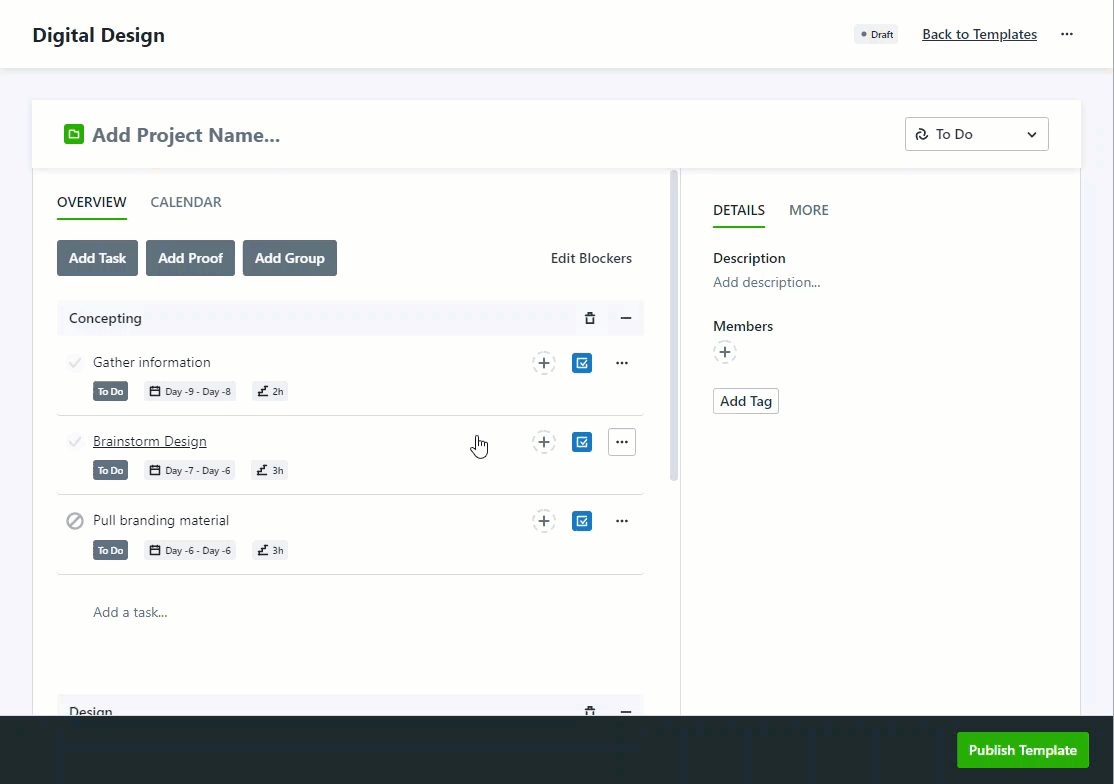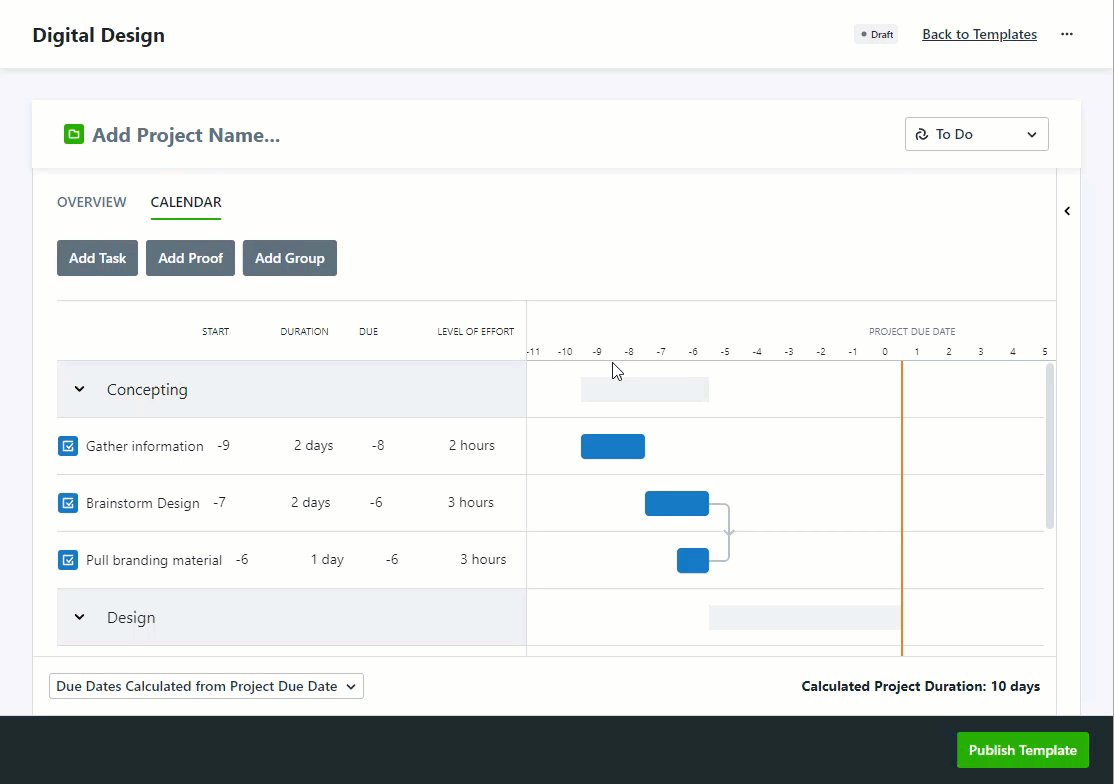NOTE: Dependencies is only available to Business and Enterprise Tiers
What are Dependencies?
Dependencies take your team's project management to the next level. By setting up dependent relationships between related tasks, you can structure projects so that tasks are better organized and completed in the correct order. Users with the "Manage Dependencies" permission are able to create and edit dependencies.
How Dependencies Work
Let's look at an example of a project for a digital ad. The 🚫 symbol denotes blocked items. Hovering over the symbol will show you what the task is blocked by.

In our project, the task "Create and Finalize Ad" has two blockers, "Concept for Ad Design" and "Copy for Ad," because we need both of those in order to create our ad. In addition to having those two blockers, "Create and Finalize Ad" is in turn a blocker for the next task, "Send Digital File to Printer," because we have to have the ad completed in order to send it off.
When you open the task, you can see its blockers as well as any other tasks it might be blocking.

While an item is blocked, it cannot be marked as completed.

Anyone who is assigned to work that is no longer blocked will be notified when their assigned tasked is unblocked, so they know they'll have what they need in order to get started.

Users can opt to suppress both in-app and email notifications for blocked work items to ensure they're only receiving notifications related to work that is ready.
Managing Dependencies in Projects
There are a few different ways to manage dependencies in a project. From the work list in the project view, you can open the action menu for each individual task and select Add Blockers.

If you have several blockers to add at once, there's also an alternate project view that lets you easily view and add dependencies. In the top right corner of the project, click the elipses [...] button then Edit Blockers. This will add the buttons Add Blockers or Manage Blockers on each task. To revert back to the original project view, click Done in the bottom right corner.

Elevate your project management within a campaign by implementing blockers. Blockers can be assigned to tasks across various projects within the same campaign.
For instance, consider a campaign involving a "Graphic Design" project and a "Coordinate with Printer" project. You can use blockers to prevent work from beginning on a task such as "Send Final Artwork to Printer" in the "Coordinate with Printer" project until the task "Select Main Imagery" in the "Graphic Design" project is marked as completed. This ensures a streamlined and synchronized workflow across interconnected projects within the campaign.
Managing Dependencies in Project Templates
You can add dependencies within the Gantt View of projects and Project Templates, either from the work list in Overview, or from the Calendar view when adding automatic date calculations.
From the work list, you can select the action menu on the individual tasks and select Add Blockers or Manage Blockers. If you have multiple blockers to manage, you can select Edit Blockers in your project view and then select the Add Blockers or Manage Blockers below each task.

In the Calendar view of your project template, you can manage dependencies in the Gantt View. Click on the circle next to a task and drag to the correlating task to add a blocker. You can delete a blocker by clicking on the connecting arrow and selecting the trash icon. 
Dependencies in Custom Views
If you would like to view your work with or without blockers, you can modify your Custom Views. When creating a new view in the Work management page, select Blocked Status as a filter. You then have the option to filter work items that are Blocked or Not Blocked.

For extra visibility, try adding the "Blocked Status" column to your table view!